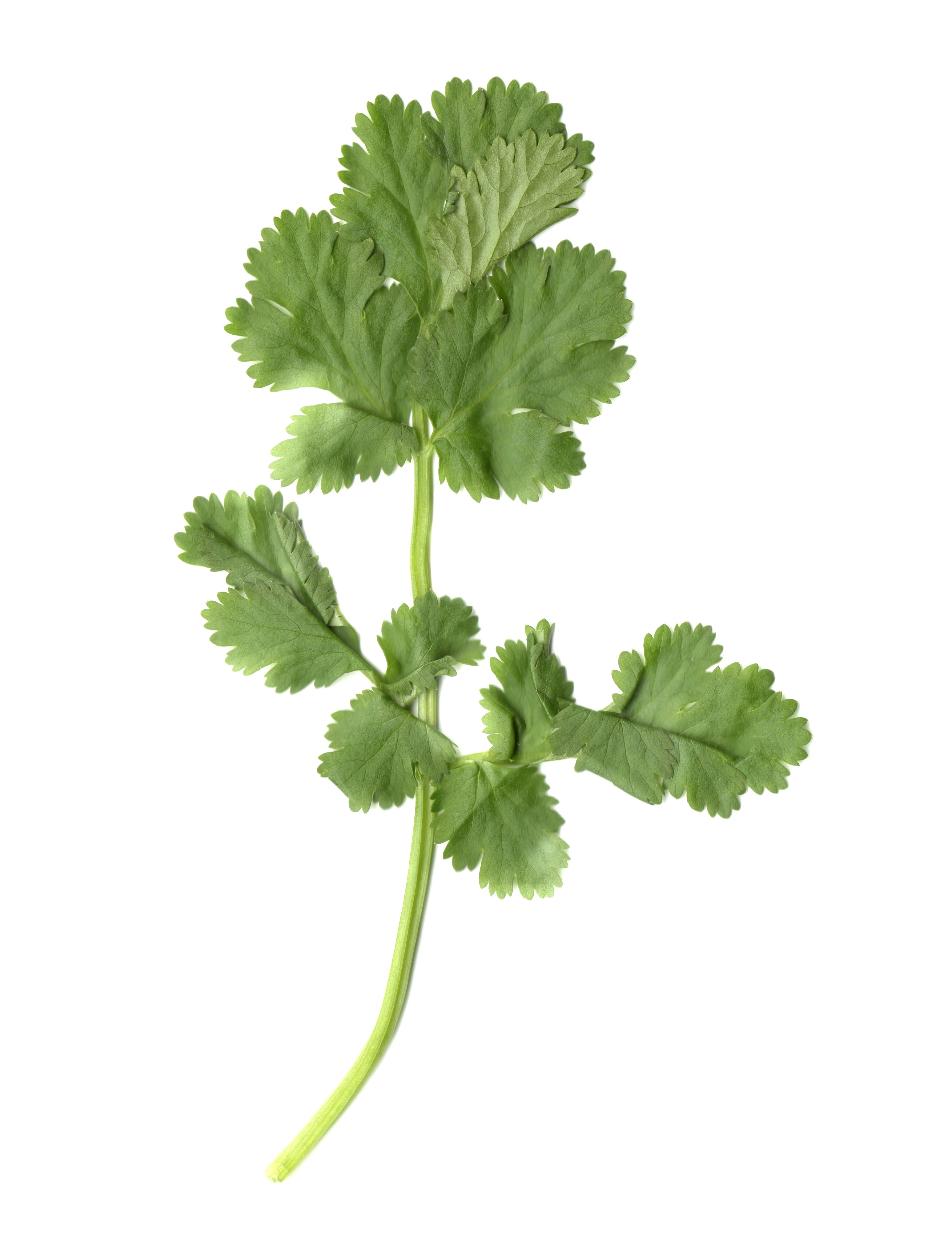Coriander seeds have a health-supporting reputation that is high on the list of the healing spices. In parts of Europe, coriander has traditionally been referred to as an “anti-diabetic” plant. In parts of India, it has traditionally been used for its anti-inflammatory properties. In the United States, coriander has recently been studied for its cholesterol-lowering effects.
Control of Blood Sugar, Cholesterol and Free Radical Production
Recent research studies (though still on animals) have confirmed all three of these healing effects. When coriander was added to the diet of diabetic mice, it helped stimulate their secretion of insulin and lowered their blood sugar. When given to rats, coriander reduced the amount of damaged fats (lipid peroxides) in their cell membranes. And when given to rats fed a high-fat, high-cholesterol diet, coriander lowered levels of total and LDL (the “bad” cholesterol), while actually increasing levels of HDL (the “good” cholesterol). Research also suggests that the volatile oils found in the leaves of the coriander plant, commonly known as cilantro, may have antimicrobial properties.
A Phytonutrient-Dense Herb
Many of the above healing properties of coriander can be attributed to its exceptional phytonutrient content. Coriander’s volatile oil is rich in beneficial phytonutrients, including carvone, geraniol, limonene, borneol, camphor, elemol, and linalool. Coriander”s flavonoids include quercitin, kaempferol, rhamnetin, and epigenin. Plus, coridander contains active phenolic acid compounds, including caffeic and chlorogenic acid.
Nutrient As Well As Phytonutrient-Dense
Not only is coriander replete with a variety of phytonutrients, this exceptional herb emerged from our food ranking system as an important source of many traditional nutrients. Based on our nutrient density ranking process, coriander qualified as a very good source of dietary fiber and a good source of iron, magnesium and manganese.
Spice Up Your Life and Subdue the Salmonella
Coriander (also called cilantro) contains an antibacterial compound that may prove to be a safe, natural means of fighting Salmonella, a frequent and sometimes deadly cause of foodborne illness, suggests a study published in the June 2004 issue of the Journal of Agriculture and Food Chemistry.
Healing with Cilantro and Coriander:
To make a medicinal tea, use 1 teaspoon of dried leaves or crushed seeds (or ½ teaspoon of powdered seeds) per cup of boiling water. Steep for 5 minutes. Drink up to three cups a day before or after meals.
Both forms of the herb can:
Improve digestion: The herb has been shown to improve tummy troubles of all kinds, from indigestion to flatulence to diarrhea. “Both Cilantro and Coriander have been shown to settle the stomach, ” says James A. Duke, Ph.D., a botanist retire from the U.S. Department of Agriculture and author of The CRC Handbook of Medicinal Herbs. Drink a cup of the tea when stomach discomfort strikes.
Relieve colic: Weak Coriander tea may be give children under age 2 for colic. It”s safe for infants and may relieve their pain-and help you get some much-needed sleep.
Prevent infection: Cilantro and Coriander contain substances that kill certain bacteria and fungi, thereby preventing infections from developing in wounds. Sprinkle some dried Coriander seeds or leaves on minor cuts and scrapes after thoroughly washing the injured area with soap and water.
Soothe arthritis pain: Intriguing new studies suggest that Cilantro and Coriander have anti-inflammatory effects. Since the pain of arthritis is cause by inflammation, a cup of this tea may help you.
Cilantro Chelation Pesto
Heavy metal poisoning is rampant. It is a major cause of hormonal imbalances, cancer, thyroid problems, neurological disturbances, learning problems, depression, food allergies, parasites, etc.. etc. This is a great recipe that is not only easy to make but also really yummy, and it tells you how to remove heavy metals from the body!
Cilantro is truly a healing food. One friend suffering from high blood pressure due to mercury poisoning had her blood pressure return to normal after eating two teaspoons of this pesto daily for only a week. So whether you need to detoxify heavy metals from your body or just wish to use it as a preventative measure, 2 teaspoons a day is all you need to take. This pesto has now become a regular in my diet.. Enjoy!
Cilantro Chelation Pesto
4 cloves garlic
1/3 cup Brazil nuts (selenium)
1/3 cup sunflower seeds (cysteine)
1/3 cup pumpkin seeds (zinc, magnesium)
2 cups packed fresh cilantro (coriander, Chinese parsley) (vitamin A)
2/3 cup flaxseed oil
4 tablespoons lemon juice (vitamin C)
2 tsp dulse powder
Sea salt to taste
Process the cilantro and flaxseed oil in a blender until the coriander is chopped. Add the garlic, nuts and seeds, dulse and lemon juice and mix until the mixture is finely blended into a paste. Add a pinch to sea salt to taste and blend again. Store in dark glass jars if possible. It freezes well, so purchase cilantro in season and fill enough jars to last through the year.
Cilantro has been proven to chelate toxic metals from our bodies in a relatively short period of time. Combined with the benefits of the other ingredients, this recipe is a powerful tissue cleanser.
Two teaspoons of this pesto daily for three weeks is purportedly enough to increase the urinary excretion of mercury, lead, and aluminum, thus effectively removing these toxic metals from our bodies. We can consider doing this cleanse for three weeks at least once a year. The pesto is delicious on toast, baked potatoes, and pasta.








